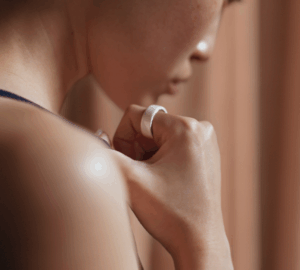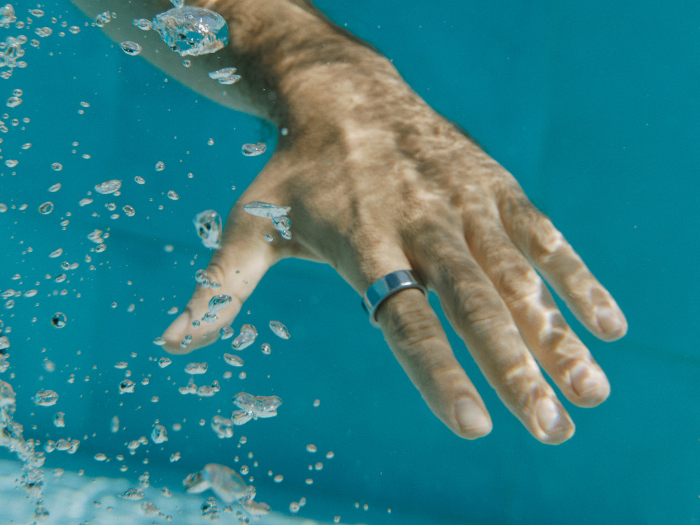Whether you’re a wellness novice or a health enthusiast, you’ve likely heard of cold exposure therapy—i.e., taking an ice bath, cold plunge, or even a freezing shower to reap health benefits. It’s become popular in biohacking circles and among athletes, and research does suggest it may deliver some benefits for recovery, stress management, and metabolic health.
But exposing your body to freezing temperatures doesn’t come without dangers. As with any health modality, it’s important to understand the nuances behind this practice. Keep reading to learn about the potential benefits and the risks of cold exposure therapy, plus how to dip your toes in safely.
What Is Cold Exposure Therapy?
Cold exposure therapy may have recently entered the popular wellness lexicon, but it’s not necessarily new. Athletes, biohackers, and our Nordic friends and colleagues have been exposing themselves to chilly temperatures for years. However, it’s risen in popularity in the past decade or so thanks to consistent scientific research proving potential benefits, as well as frequent praise on popular platforms like the Huberman Lab Podcast.
There are various ways to perform cold exposure therapy. You can hop into an ice bath or barrel, take a cold shower, or even consider swimming in cold bodies of water, like a lake or the ocean. Various studies have looked at different modalities, and there’s no one definitive way to practice cold exposure therapy—as long as you do it safely. (More on that below.)
| Member Tip: To track how cold plunging potentially affects your health metrics with Oura, tag “Cold Exposure” whenever you take an icy plunge and see if it impacts your longer-term Trends or personal Discoveries. |
Science-Backed Benefits of Cold Exposure Therapy
While more research is needed to draw conclusive learnings on the benefits of cold exposure therapy, there is evidence that it can help boost mood, improve recovery, build resilience to stress, and enhance immune function, among other potential uses.
Boost your mood
Research suggests cold water exposure can be a tool to reduce stress and may even improve symptoms of depression and anxiety.
Just dunking your hands or face into icy water has been shown to stimulate the vagus nerve and activate the parasympathetic nervous system to quickly reduce stress and anxiety.
A study on cold exposure as a treatment for depression found that cold water immersion triggers an intense surge of electrical impulses to the brain, thanks to the high density of cold receptors. This rapid brain activation has been shown to produce an antidepressant effect.
| Member Tip: No access to an ice bath? Try following a guided meditation or breathing exercise on the Oura App under the Explore content. |
READ MORE: 9 Simple (and Science-Backed!) Ways to Lower Stress
Improve resilience to stress
A cold plunge (or any form of cold exposure therapy) functions an intentional, controlled stressor to your body known as a “hormetic” stressor—aka, a good type of stress. The brief exposure intermittently triggers your fight-or-flight response, which helps train your body to recover and bounce back from other stressors more effectively in the long-term.
READ MORE: Resilience: Improve Your Ability to Recover From Stress
Accelerate workout recovery
After a tough training session, soreness, tightness, and inflammation can not only prevent further gains, but lead to injury. A meta-analysis published in Sports Medicine found that, when compared to passive recovery, cold-water immersion after exercise reduced muscle soreness, increased muscle power, and improved perceived recovery.
READ MORE: How Sleep Helps Muscle Recovery and Growth
Increase metabolic rate
A 2014 study found that cold exposure increases metabolic rate approximately two-fold and activates “brown fat.” Brown fat is considered beneficial for health because it is mitochondria-rich, and helping to burn calories, regulate blood sugar, improve insulin levels, and naturally boost your metabolism.
It’s also the type of adipose tissue that helps you maintain your body temperature by producing heat. That’s why—during a cold plunge—brown fat is activated. Additionally, it “recruits” white adipose tissue, which can support weight loss and make your fat stores more metabolically active.
Fight inflammation and enhance immune function
When you experience an injury or swelling, the first thing you’re told to do is to ice it, and for good reason!
Cold therapy stimulates white blood cells (immune cells) and decreases pro-inflammatory cytokines and mediators (inflammation). Additionally, it releases norepinephrine, a stress hormone that is known to regulate and enhance immune function.
READ MORE: How Oura Can Help Monitor Illness
Boost alertness and energy levels
It might be a mental struggle to willingly hop into an ice bath, but afterward, you’ll feel on top of the world: clear-minded, energized, and ready to take on the day. This happens because the cold triggers a release of serotonin, dopamine, cortisol, and norepinephrine, which collectively increase alertness, regulate stress, and activate your brain’s reward center.
Enhance circulation
You may experience a tingly feeling when you get out of an ice bath—this is because your blood vessels are dilating after being constricted from the cold. This process—referred to as vasoconstriction to vasodilation—can enhance blood circulation and contribute to better vascular function.
Better circulation has implications for cardiovascular health: it facilitates lung function, heart health, and efficient oxygen and nutrient delivery to your cells.
| Member Tip: See if you notice improvements in your cardiovascular health by tracking your Cardiovascular Age with Oura. |
Improve your sleep
The research is mixed on cold exposure and sleep. A cold plunge leaves you feeling alert and energized; however, in some cases, it may also help you sleep better. After triggering your sympathetic nervous system during cold exposure, your parasympathetic nervous system ramps up. This can alleviate stress and help you feel relaxed.
A study found that a 10-minute cold shower after an evening workout increases deep sleep. On the other hand, other research finds that a warm bath or shower may also be conducive for better sleep—and might feel a little more relaxing!
How to Start Cold Plunging
Start by entering the cold water feet-first. Remember to breathe slowly and steadily to avoid hyperventilation. See Huberman’s tips on strengthening your mental fortitude for a cold plunge, called the “Counting Walls” approach, here. Beginners can start with as few as 30 seconds of cold exposure and work their way up.
A word of caution: Never try cold exposure therapy alone, while under the influence, or in a dangerous body of water. Suddenly immersing yourself in freezing temperatures can trigger an increase in blood pressure and stress, which can cause you to start breathing fast and shallow. This can cause a “shallow water blackout,” or a loss of consciousness caused by hyperventilation.
Be sure to check with your medical provider before attempting a cold plunge.
What temperature should a cold plunge be?
One systematic review and meta-analyses found that a temperature of about 50 to 59 degrees Fahrenheit (10 to 15 degrees Celsius) may be optimal in reducing muscle soreness. It does depend on an individual’s tolerance of cold, so start on the warmer end and work your way down to colder temperatures.
How long should a cold plunge last?
Based on the body of research, experts suggest aiming for 11 minutes per week (or 2-4 sessions lasting 1 to 5 minutes each) to reap the benefits of cold exposure therapy without putting your body in danger. The colder the temperature, the shorter your session needs to be.
Who should not try cold exposure therapy?
Cold exposure therapy is not recommended for people who have:
- Heart disease or any history of a heart condition
- Diabetes
- High blood pressure
- Poor blood flow or Raynaud’s phenomenon, a condition that affects blood flow in your fingers
- Peripheral neuropathy (nerve pain)
- Venous stasis, which affects blood flow to your legs
- Cold agglutinin disease, which damages red blood cells











